The new stars of design
Presenting our top 10 sparkling new design talents for 2010 – who they are, how they got here and why you need to know their names
We live in interesting times, and the output of our creative talent reflects that. For a long time, boundaries between the disciplines have been blurring, with fashion, illustration, music, design and interiors mingling. The new generation of commercial artists won't even entertain a boundary and, consequently, their work has a vibrant, experimental feel to it. Nobody knows what to expect, and that's a very good thing.
The individuals collected here embody this spirit. Their work is fresh and full of ideas, but most of all it's their enthusiasm that catches the imagination. Every one of them wants to collaborate, to mix media, to explore and to invent. But this kind of attitude is rare because it carries risk with it. And we all know where poorly handled risk leads, don't we? Without it, however, we stagnate. Faced with an uncertain world, you can either hide under your duvet or get out there and throw yourself into living.
The work featured here represents the latter option; the images are positive, they reach out, but they're not unthinking. Every piece has a story, every line a purpose. Even given the need for an underlying principle in design, these artists go the extra mile.
This Design is Mine
Design for human beings needs balance
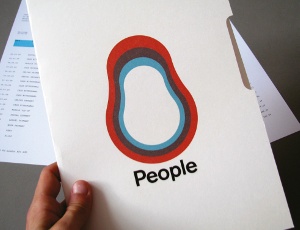
"Meticulous without being systematic" is how Jamie Gregory, the brains behind This Design is Mine, describes his work. Design, he says, is often reduced to the clean lines of carefully engineered typography, but while this can be beautiful, it's also cold. "It's important to me," says Gregory, "that my work contains an air of individuality."
That human trait is evident throughout Gregory's portfolio. Notably, his sensitive use of both colour and shape has recently been directed to the problem of combining zoology and typography, which are far from obvious bedfellows. The resulting typeface, initially intended for signage at London Zoo, incorporates various animal forms in a way that is at once playful and thoughtful.
Lately Gregory has been moving in a more illustrative direction and is keen on continuing this trend. "I want to pursue an illustrative approach to typeface design," he tells us. "And I'm keen to make more that are designed for specific projects or environments."
Having only graduated from Central Saint Martins in 2008, it's too early to say in what creative direction Gregory will end up moving, but he's keen to explore the possibilities. "You meet so many interesting and talented people in design," he says. "The prospect of future collaborations is one of the things that keeps me going."
Se¡n Mongey
Expect the unexpected€¦
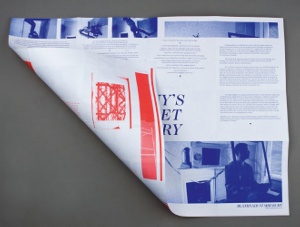
Fresh from his Visual Communication degree at Dublin's National College of Art & Design, Se¡n Mongey cut his design teeth at studios including Zero-G and Atelier David Smith before landing his current role at Studio Aad. All this in-studio training has proved invaluable for both Mongey's design skills and his portfolio, which now boasts work for Ireland's national theatre, Abbey Theatre, and Irish construction company it a mBíonn Ltd. It won't be long, however, before we see Mongey's work under his own banner. "I'm hoping to launch a couple of personal projects and produce a few books with some designers and illustrators I work with," says the designer. "The majority of my work to date has been client led, so I'd like to have a bit more c ontrol over the content for a change." Priding himself on his adaptability (so far he's worked across print design, web design and design for 3D objects) there isn't a canvas that Mongey won't turn his hand to. It's this element of surprise that will continue to drive him, and possibly even define his career.
"I would say that getting the most recent job back from the printers is probably where I get my kicks," Mongey enthuses. "The nervy moments before opening those brown boxes to see your finished physical work are the moments that make or break it for me."
Nikki Farquharson
Fashion is given an abstract makeover
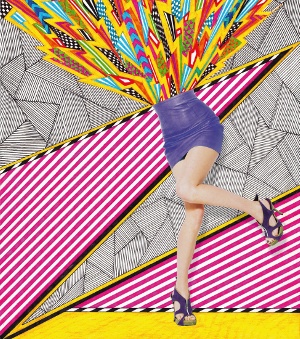
Though she spent the best part of six years training to be a designer and typographer, Nikki Farquharson just loves to draw. "The more I studied graphic design, the more I wanted to break free from it," she recalls. So that's exactly what she does, bringing that revelatory sense of escapism to the world of fashion illustration.
Though her fashion work for the likes of New York's Missbehave magazine is getting a lot of attention, Nikki is keen to emphasise her conceptual book work. "I'm interested in how people interact with one another," she explains, "how different people have a natural and mutual understanding of simple, everyday things." There are plans for a series of such titles.
Then there's typographic illustration, which acts as a bridge between books and fashion. These often centre on phrases from everyday life and are formed from abstractions that impart a feeling of otherworldliness. It's an intriguing combination of message and medium, each taking turns to grab your attention.
So where's all this leading? "I have this weird belief that a designer or artist has truly 'made it' when they design album art," says Farquharson. There is, however, an even more colourful ambition: "I'd love to be commissioned by a fashion magazine such as Vogue or Harper's Bazaar to create mixed media illustrations."
Revenge is sweet
Using their initiative€¦
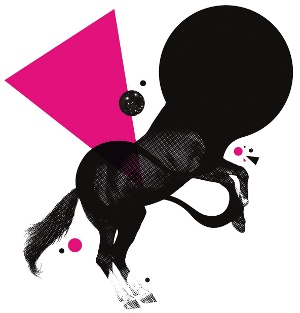
Two heads are better than one? Having brought together their two very different styles of illustration to synthesise a new style, Angelique Piliere and Lee Owens certainly agree.
The two designers met at the National Institute of Design in Melbourne, Australia, Owens a native and Piliere fresh from her studies in Lyon. Before long, the pair began collaborating on personal projects, something that still forms the basis of their practice.
"We really enjoy producing personal work," says Owens. And this, he says, is why they set up Revenge is Sweet in the first place: "Our self-initiated work is fundamental. We will try to progress it for as long as we are around."
An exhibition of self-initiated work entitled Love Me or Die is upcoming, but how does this mesh with their commercial activities? "We like to respond directly to briefs rather than have concepts handed to us on a plate," says Owens, an approach that gives the studio the opportunity to respond to the brief in a natural and spontaneous fashion. And to anyone who might worry about the blank canvas causing trouble, Owens has a ready reply: "Having ideas is not really an issue; it's more having the time and resources to get them all done."
Amelia Roberts
It's what graphic design is all about
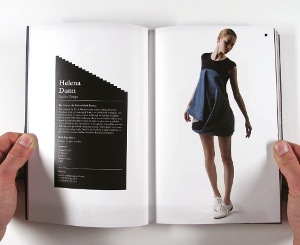
Most designers tell some version of the story of how they were crawling around with crayons, creating Da Vinci-esque murals before they had teeth in their heads. Not so Amelia Roberts, who, by the time she had completed her GCSEs, was all set for a career in accountancy.
Then a friend mentioned that she had an aunt who worked in "some cool place." Roberts gave this enigmatic aunt a call to see what all the fuss was about, and shortly thereafter: "I turned up at Intro, met Adrian Talbot, and left the accounts department within five minutes. It was all such luck." Fate and design working in tandem? A rare thing indeed.
Having graduated from the University of Brighton and with a number of internships at London studios - GBH and Studio8 among them - already under her belt, the designer moved naturally into the freelance life. "Since leaving university I have enjoyed it all," says Roberts, "meeting with clients, the pressures, the time limits. I love it."
Though she is happy exploring all that the design world has to offer, in the future Roberts would like the work that she produces to be a force for good: "To help people who have an important message be heard - that is what graphic design is really all about."
John Ryan Solis
Building on obsession
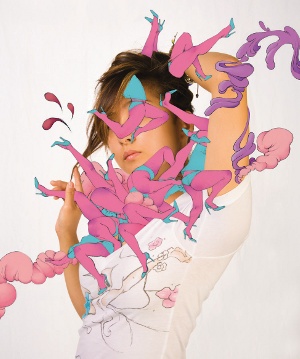
John Ryan Solis walks that thin line between art and illustration. His work is layered and carefully produced, relying for its effect on traditional materials and an almost obsessive eye for detail. Currently working at New York's Vault49, Solis is busy experimenting. "A lot of my previous work has been focused mainly on the juxtaposition of the human form," he explains. "I've recently been experimenting with overlapping and layering content, which can eventually bring out a storyline."
Experimentation is accompanied by something like a thirst for self-knowledge. "I've been creating abstract imagery and exploring my obsession with drawing an intricate amount of detail," explains Solis. If there were more hours in the day, he goes on, this would blossom to include a wider variety of media: photography, video and even sculpture.
The ultimate implementation of these creative meanderings would be fashion. "A dream job for me is to be able to work on a campaign project for a fashion label," Solis enthuses, "whether it would be designing a set for a photo shoot or a stage design for a runway." Given that he's working at Vault49, that dream can't be too far from being realised.
Robi Jµeleht
Drawing design and illustration together
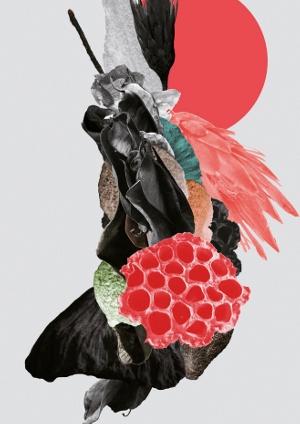
If he had to say one way or the other, Estonian creative dynamo Robi Jµeleht thinks of himself as being an illustrator first, then a designer. But he's keen to point out that neither exists in a vacuum: "The two stand very close together and are constantly colliding," he says. And in these high-energy events, rare and beautiful things are produced.
For Jµeleht, the reaction to his work is what he values most deeply. "Creating something that other people find appealing is a huge inspiration," he states, "and is one of the main things keeping me in this business."
From early experiences with drawing and painting, Jµeleht rapidly diversified. "I tried all kinds of different things, like animation, photography and 3D," he explains. But illustration was the one that stuck: "I just started messing around in different graphics programs, and have been deeply obsessed with this ever since."
Producing logos and illustrations for small, often music-related, clients occupied the next couple of years. Then, in 2006, Jµeleht landed a design position at the branding agency LOOVVOOL in Tallinn, and he hasn't looked back since.
Though his freelance portfolio continues to expand in the direction of music and culture, centred on the bands and events of his home town, Jµeleht is not the sort to just coast along. He'll admit that "it's always fun doing projects where you have total creative freedom," but Jµeleht's best work often comes into being when the pressure reaches fever pitch: "The more obstacles you face, the more you learn."
It's this spirit of adventure that makes Jµeleht's work so exciting. It also makes him appeal to disciplines outside of design, such as fashion and interiors. His horizons may be expanding rapidly, but the illustrator/designer remains philosophical about the future: "I have no idea what my dream job would be, but I'm sure I'll recognise it when it knocks on my door."
Alex Ostrowski
Design as mind over matter
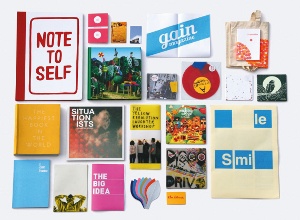
Alex Ostrowski has a very healthy attitude to his work. "All of what I create ends up in people's heads, so," he reasons, "it's worth cultivating a healthy curiosity in how people operate and think."
Ostrowski wants to take this unarguable truth to its natural conclusion, and take design out into the wider world to see what good it can do. "A lot of the skills that lie in the creative industries could be put to amazing effect in the tackling of social challenges," he says. Design, he believes, has much to offer areas such as education and healthcare.
Putting these ideas into action is going to be a challenge, so Ostrowski has already made a start. Collaborating with the Frenchay Brain Injury Rehabilitation Centre in Bristol, he and a bunch of psychologists and occupational therapists got together in a bid to see what could be done to help improve the day-to-day lives of people suffering from post-traumatic amnesia.
"We recognised that, despite their injuries, colour still registered strongly with patients," explains the designer, "so this could be used to add definition and order to the things they interacted with." The resulting colour-coding system, which could be applied to everything from the staff uniforms and timetables to the building itself, was collated by Ostrowski in his book I Am Here.
Ostrowski brings this clarity of thought to all his work, whether freelance or for the Young Creative Network (YCN), where he's currently working full-time. "Visual communication should share all the rich parallels with interpersonal communication," he says. "Style, intonation, accent, humour - I try to stick with that idea, and to not forget that everything I produce is for people."
There has to be some let-up, though - fixing the world one design at a time could become a bit oppressive if you don't have a way to let off steam, and for Ostrowski this escape is music. Playing with his band Kotki Dwa gives the designer a chance to let go. "It's good to have another outlet where you don't need to justify and explain everything," he says. "Music can afford to be more spontaneous."
…h
Collaborative, creative, curious and fun
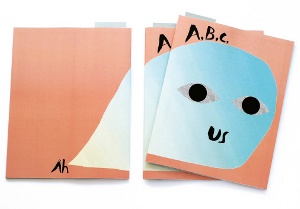
Though they both hail from Sweden, Elin Svensson and Johanna Lundberg didn't actually meet until they were in their final year at the London College of Communication. And, after collaboration on a couple of projects, they decided to set up their studio, …h, immediately upon graduation. It was a brave move, particularly given the economic climate. But, says Lundberg, it wasn't a tough call to make: "We were just so happy that we met each other and work so well together that it came naturally."
It might have been difficult to find these two Scandinavians a suitable placement, anyway. "We try to work across all disciplines," says Lundberg, and the duo have recently completed projects involving art direction, illustration, branding, website design and motion graphics. Anything is fair game, continues Lundberg, "All in an open and collaborative manner."
But it's Svensson and Lundberg's modus operandi that really sets them apart. The pair approach new briefs with as few preconceptions as possible, but they do have an ethos, says Lundberg: "We strive to create functional design that reaches out to both the head and the heart."
Everyone can appreciate purity of concept and clarity of message, "But most of all we like to have fun," laughs Lundberg. If you enjoy what you do, the challenges look very different. Rather than sticking to a rigid specialism, …h's founders look forward to surprises, to jobs that will take them into new territory. "It's actually really exciting not knowing what the next project will be and what medium we'll be working in," says Lundberg. "This is what keeps us motivated."
With this kind of receptive outlook, it's difficult to see into the future, and that's the way they like it at …h. But that doesn't mean you can't daydream. Lundberg's to-do list includes children's books, music videos, set designs, interactive design and a long list of people to collaborate with. "And that list is ever-growing," she adds. "Fingers crossed we'll be able to start ticking them off soon."
Jessica Walsh
Creativity on speed dial
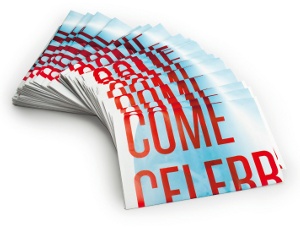
For Jessica Walsh, photography and painting classes led to a degree in graphic design at the Rhode Island School of Design and, eventually, a formative stint with Paula Scher at Pentagram, New York. From there Walsh moved to Print magazine in 2008. Add to that a raft of freelance commissions and personal projects, and it's been quite a ride.
Though still full-time at Print, Walsh also has a studio in New York's Chelsea, where she is busy exploring design as if it were some amazing new territory full of surprises and possibilities. Which, of course, it is if you have the eyes to see them.
"I always try to die-cut and laser-cut things," she says, "use my own photography, spray-paint things, make things with gold foils and out of Plexiglass, illuminate things, extrude type, use 3D programs to render shapes..." Listening to Walsh talk about her work, you can't help but feel her enthusiasm. "I have the laser cutter I work with on speed dial," Walsh adds.
Given her love of mixing media, it is hardly surprising that several of Walsh's favourite projects have involved her collaborating with other artists. "I don't want to be pegged as doing only one thing," she says. "I love it all."
Thanks to this enthusiasm, as she drills down through the layers of meaning that her work reveals, almost no outcome is ruled out in advance. For this approach to work, you have to be handling something with genuine substance - as Walsh herself puts it, "Designing for interesting content." As this rising star is well aware, design is most rewarding when you're handling concepts and ideas, not dressing vacuous sales pitches.

Thank you for reading 5 articles this month* Join now for unlimited access
Enjoy your first month for just £1 / $1 / €1
*Read 5 free articles per month without a subscription

Join now for unlimited access
Try first month for just £1 / $1 / €1
Get the Creative Bloq Newsletter
Daily design news, reviews, how-tos and more, as picked by the editors.

The Creative Bloq team is made up of a group of design fans, and has changed and evolved since Creative Bloq began back in 2012. The current website team consists of eight full-time members of staff: Editor Georgia Coggan, Deputy Editor Rosie Hilder, Ecommerce Editor Beren Neale, Senior News Editor Daniel Piper, Editor, Digital Art and 3D Ian Dean, Tech Reviews Editor Erlingur Einarsson, Ecommerce Writer Beth Nicholls and Staff Writer Natalie Fear, as well as a roster of freelancers from around the world. The ImagineFX magazine team also pitch in, ensuring that content from leading digital art publication ImagineFX is represented on Creative Bloq.
